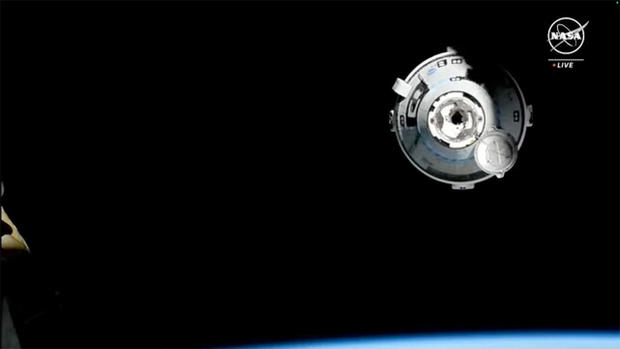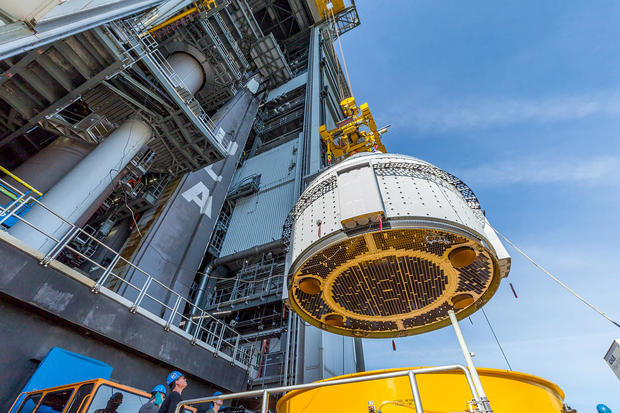NASA again delays Boeing Starliner's return to Earth, new target date still undetermined
NASA and Boeing managers have again decided to extend the Starliner crew capsule's stay at the International Space Station, passing up a June 26 re-entry to allow more time for analysis and testing to make sure helium leaks and thruster failures are fully understood, officials said late Friday.
NASA plans to hold a formal re-entry readiness review before setting a new landing target date. Given the on-going analysis, the Starliner's undocking and return to Earth likely will slip past two already planned space station spacewalks on Monday and July 2.
In the meantime, Starliner commander Barry "Butch" Wilmore and co-pilot Sunita Williams are still cleared to undock and fly home at any time if a station malfunction or other issue crops up that requires a quick departure. As such, officials say they are not stranded in orbit.

"We are taking our time and following our standard mission management team process," Steve Stich, manager of NASA's Commercial Crew Program, said in a statement. "We are letting the data drive our decision-making relative to managing the small helium system leaks and thruster performance we observed during rendezvous and docking."
In addition, he said, given the extended duration of the Starliner mission, "it is appropriate for us to complete an agency-level review, similar to what was done ahead of the NASA's SpaceX Demo-2 return after two months on orbit, to document the agency's formal acceptance on proceeding as planned."
He was referring to the first flight of astronauts aboard SpaceX's Crew Dragon ferry ship in 2020. But the Demo-2 mission did not experience problems like the ones noted so far in the Starliner's first piloted test flight.
The issue for Starliner troubleshooters is that the helium leakage and the thrusters in question are located in the Starliner's drum-shaped service module, which is attached to the base of the crew capsule. The service module is jettisoned prior to re-entry and burns up in the atmosphere.
Given that engineers will not be able to examine the actual hardware after the fact, NASA and Boeing managers want to give them as much time as possible to review telemetry, to continue testing and to polish contingency scenarios in case additional problems show up after undocking.
They also want to learn as much as possible about what might be needed to prevent similar problems in downstream flights. NASA managers were hoping to certify the Starliner for operational crew rotation flights to the space station starting early next year, but it's not yet clear if that's remains a realistic goal.
In any case, Stich said the Starliner "is performing well in orbit while docked to the space station."

"We are strategically using the extra time to clear a path for some critical station activities while completing readiness for Butch and Suni's return on Starliner, and gaining valuable insight into the system upgrades we will want to make for post-certification missions."
Already running four years behind schedule, the Starliner was launched June 5, a month later than planned due to minor problems with its Atlas 5 rocket, trouble with a countdown computer and because of an initial helium leak in the system used to pressurize the capsule's thrusters.
NASA and Boeing managers decided the leak was too small to pose a safety threat and the ship was cleared for launch. Once in orbit and on the way to the space station, however, four more helium leaks developed and the Starliner's flight computer took seven maneuvering jets offline when the telemetry did not match pre-launch expectations.
One thruster was deemed unusable going forward, but the others were successfully test fired last Saturday. That "hot-fire" test gave engineers confidence the jets needed for post-undocking maneuvers and the critical de-orbit "burn" will work as needed to drop the ship out of orbit for re-entry.
Likewise, officials said they were confident the helium leaks could be managed even if one or more gets worse after undocking. Only seven hours of helium is needed for the return to Earth, and the Starliner has more than 10 times that amount left on board.
- In:
- Spacewalk
- International Space Station
- Boeing
- Space
- NASA
Bill Harwood has been covering the U.S. space program full-time since 1984, first as Cape Canaveral bureau chief for United Press International and now as a consultant for CBS News.
TwitterDisclaimer: The copyright of this article belongs to the original author. Reposting this article is solely for the purpose of information dissemination and does not constitute any investment advice. If there is any infringement, please contact us immediately. We will make corrections or deletions as necessary. Thank you.




